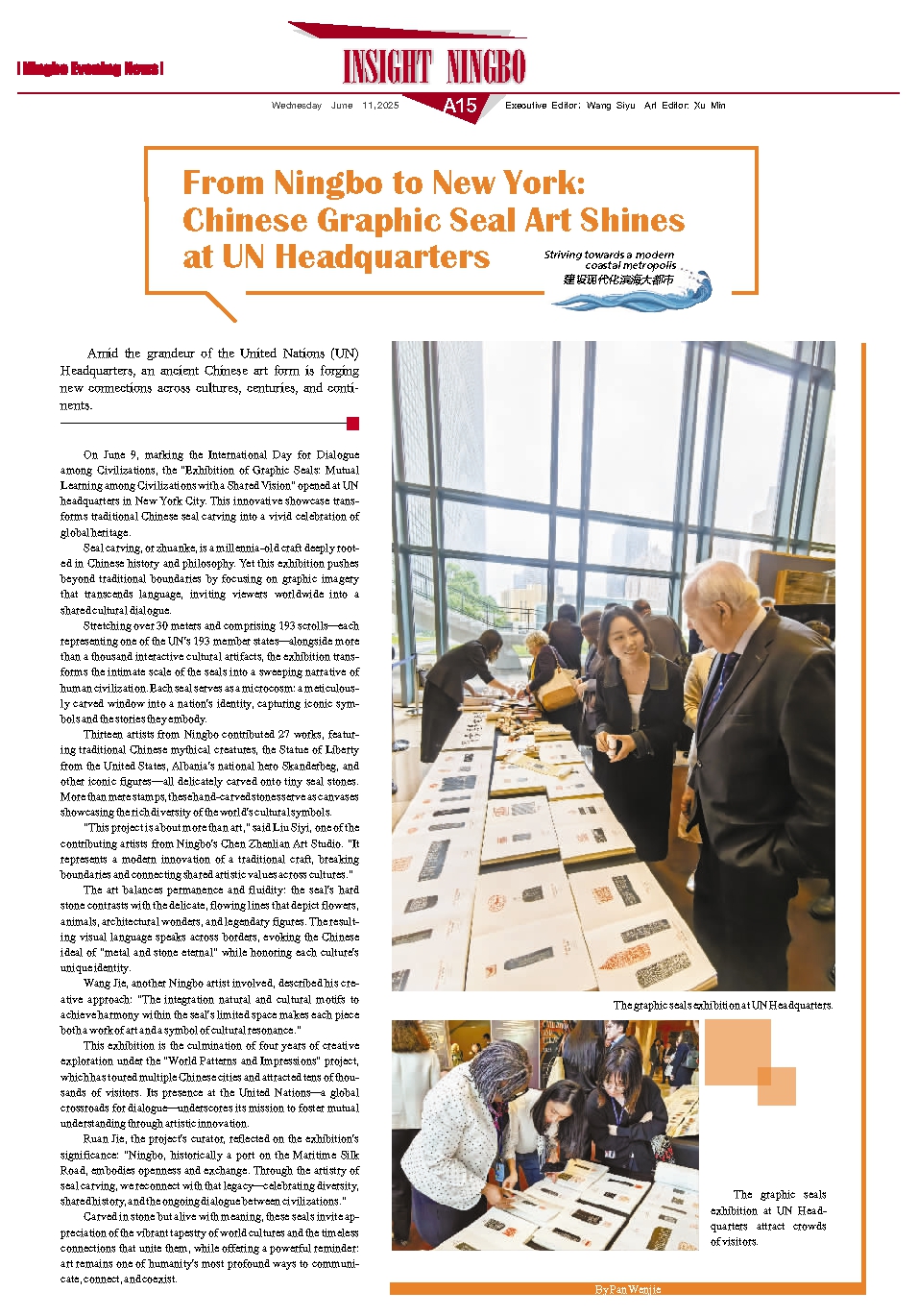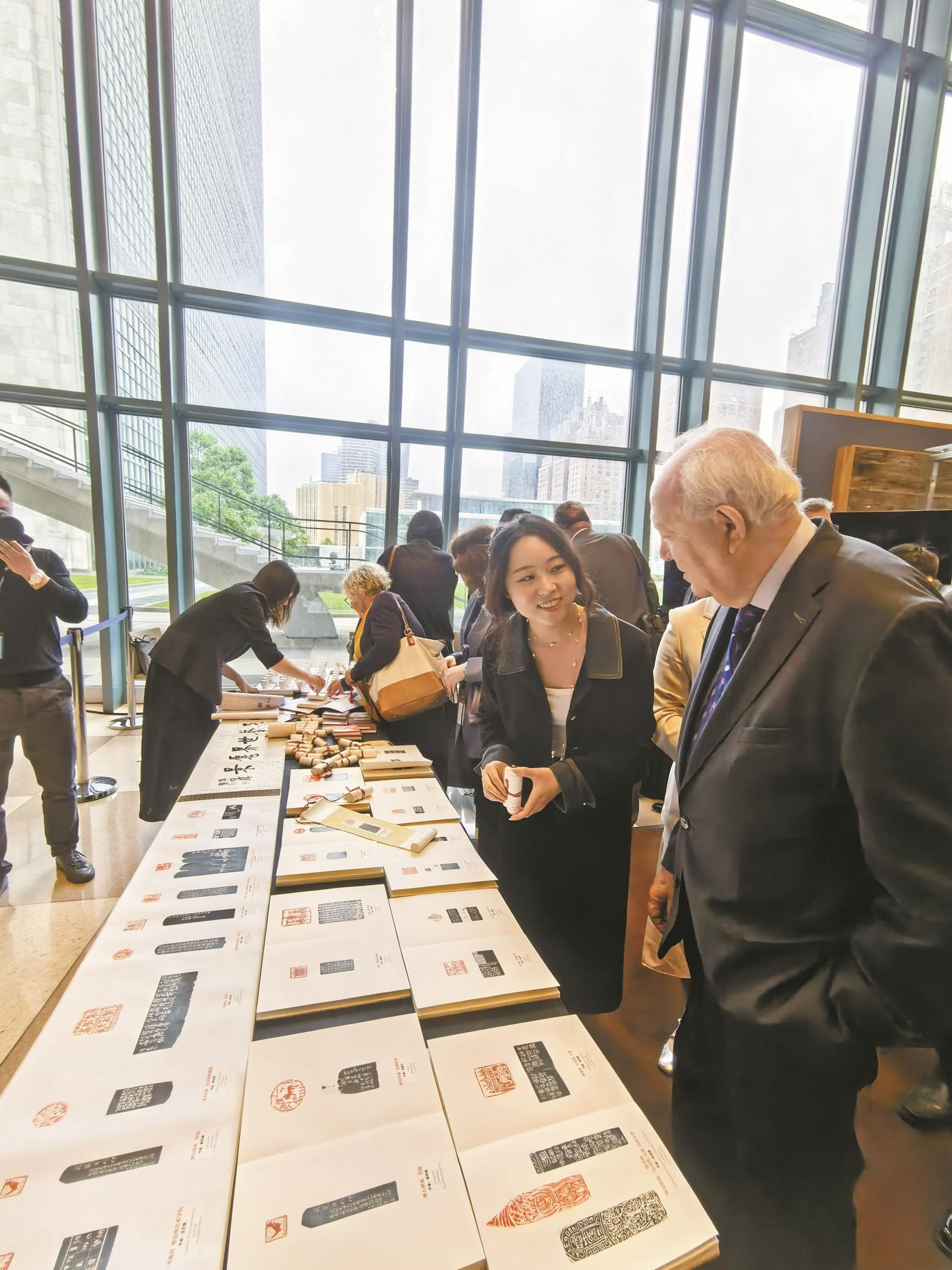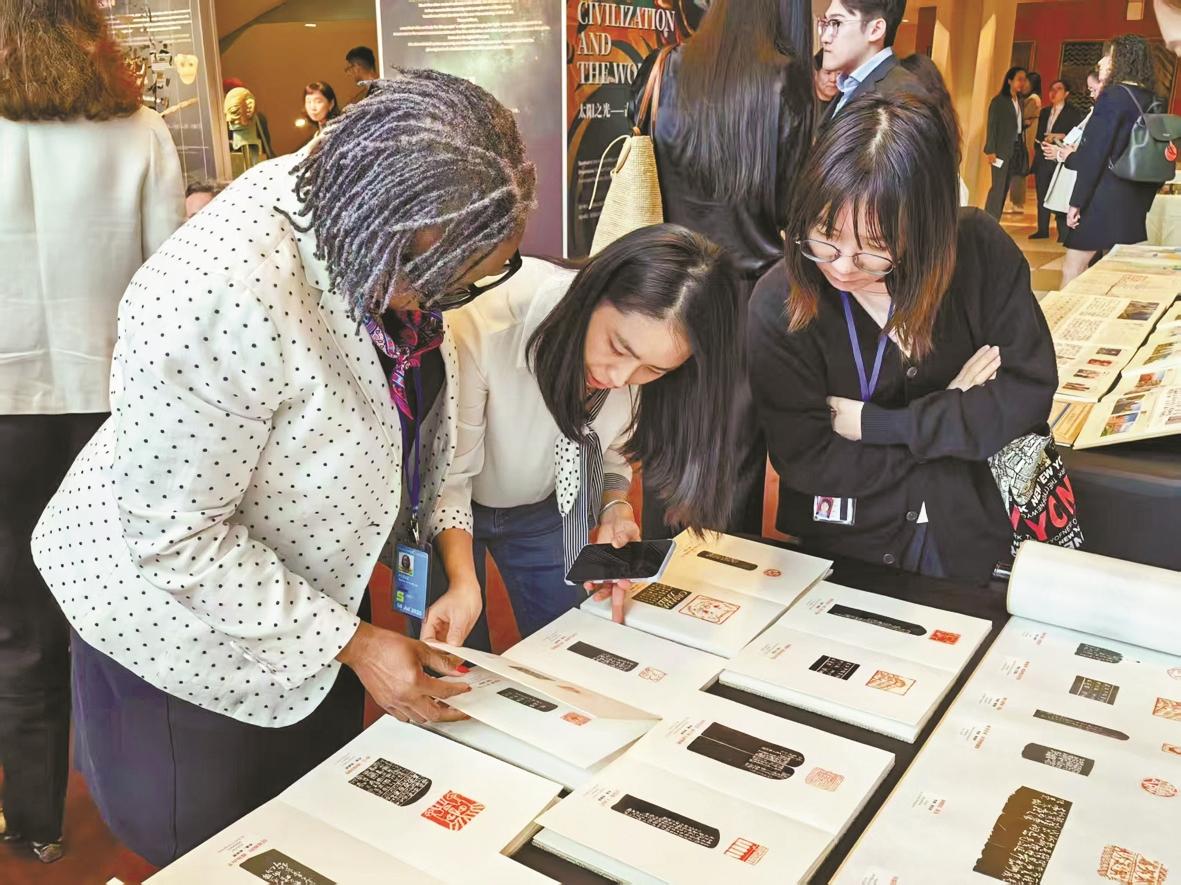Amid the grandeur of the United Nations (UN) Headquarters, an ancient Chinese art form is forging new connections across cultures, centuries, and continents.
On June 9, marking the International Day for Dialogue among Civilizations, the "Exhibition of Graphic Seals: Mutual Learning among Civilizations with a Shared Vision" opened at UN headquarters in New York City. This innovative showcase transforms traditional Chinese seal carving into a vivid celebration of global heritage.
Seal carving, or zhuanke, is a millennia-old craft deeply rooted in Chinese history and philosophy. Yet this exhibition pushes beyond traditional boundaries by focusing on graphic imagery that transcends language, inviting viewers worldwide into a shared cultural dialogue.
Stretching over 30 meters and comprising 193 scrolls—each representing one of the UN's 193 member states—alongside more than a thousand interactive cultural artifacts, the exhibition transforms the intimate scale of the seals into a sweeping narrative of human civilization. Each seal serves as a microcosm: a meticulously carved window into a nation's identity, capturing iconic symbols and the stories they embody.
Thirteen artists from Ningbo contributed 27 works, featuring traditional Chinese mythical creatures, the Statue of Liberty from the United States, Albania's national hero Skanderbeg, and other iconic figures—all delicately carved onto tiny seal stones. More than mere stamps, these hand-carved stones serve as canvases showcasing the rich diversity of the world's cultural symbols.
"This project is about more than art," said Liu Siyi, one of the contributing artists from Ningbo's Chen Zhenlian Art Studio. "It represents a modern innovation of a traditional craft, breaking boundaries and connecting shared artistic values across cultures."
The art balances permanence and fluidity: the seal's hard stone contrasts with the delicate, flowing lines that depict flowers, animals, architectural wonders, and legendary figures. The resulting visual language speaks across borders, evoking the Chinese ideal of "metal and stone eternal" while honoring each culture's unique identity.
Wang Jie, another Ningbo artist involved, described his creative approach: "The integration natural and cultural motifs to achieve harmony within the seal's limited space makes each piece both a work of art and a symbol of cultural resonance."
This exhibition is the culmination of four years of creative exploration under the "World Patterns and Impressions" project, which has toured multiple Chinese cities and attracted tens of thousands of visitors. Its presence at the United Nations—a global crossroads for dialogue—underscores its mission to foster mutual understanding through artistic innovation.
Ruan Jie, the project's curator, reflected on the exhibition's significance: "Ningbo, historically a port on the Maritime Silk Road, embodies openness and exchange. Through the artistry of seal carving, we reconnect with that legacy—celebrating diversity, shared history, and the ongoing dialogue between civilizations."
Carved in stone but alive with meaning, these seals invite appreciation of the vibrant tapestry of world cultures and the timeless connections that unite them, while offering a powerful reminder: art remains one of humanity's most profound ways to communicate, connect, and coexist.




